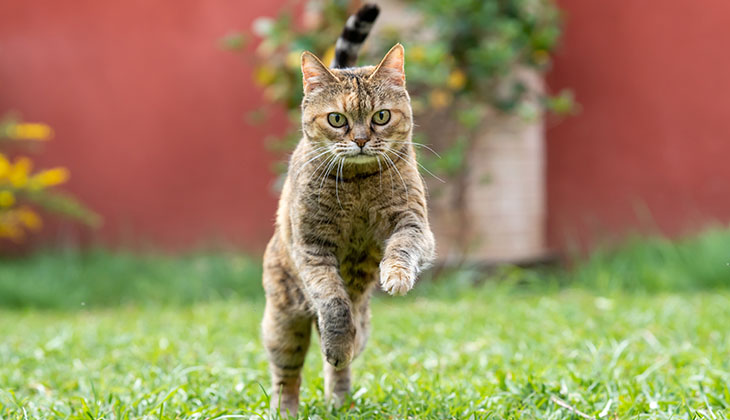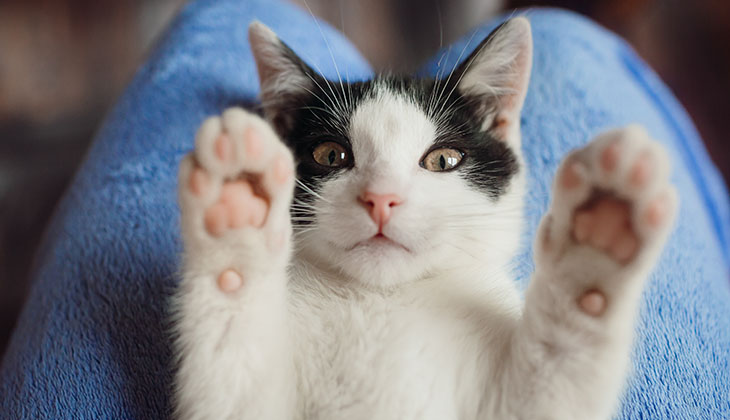How well do you know your Cat?
BEHAVIOUR & TRAVEL
20 Nov, 2022
5 minutes

Did you know that ancient Egyptians believed that cats were gods? And in Europe in the Middle Ages, cats were condemned, believed to be the companions of witches. While cats have long been viewed as mysterious and unapproachable, you know that your loveable furball makes a great companion. There are so many interesting facts about cats and chances are there are a lot of things about your beloved feline that you may not know. Read on for some fascinating details about your cat that may surprise you.

- Each cat’s nose is different, like a fingerprint – no two cats have the same nose. Each nose is unique to the individual cat, with its own pattern of bumps and ridges.
- Domestic cats share 95 % of their genetic makeup with tigers. They also share many behaviours with their wild relatives including scent and urine marking, prey stalking and pouncing.
- Cats are believed to be the only mammals who don’t taste sweetness and contrary to popular belief, many cats are actually lactose intolerant.
- Cats smell with their mouths. There is a small gland in the roof of a cat’s mouth, just behind the front teeth, that connects to the nose. When they want to take a good whiff of something, they open their mouth and may even look like they are smiling.
- A cat’s “meow” is used to communicate with humans. Despite popular belief, when a cat meows he/she is communicating only with us, not other cats. If your cat is meowing at you, he/she is most likely trying to get your attention. In fact, they communicate differently to each human – a different meow for each person!
- Purring doesn’t always mean your cat is happy. It helps cats self-soothe when they are in distress, are anxious or in pain. Many people associate the soothing sound of purring with contentment, but it doesn’t always mean that a cat is happy.
- A cat’s purr vibrates at a frequency of 25 to 150 hertz, which is the same frequency at which muscles and bones repair themselves, leading some experts to believe that purring also enables cats to actually heal themselves from injuries.
- Cats have exceptional hearing. They can rotate their ears 180 degrees to help them pinpoint sounds. Not only that, but their cone-shaped ears actually amplify sound. This explains why the average cat hears 5 times better than a human adult.

- Cats express love with their eyes. According to experts, cats convey affection by slowly blinking. Humans can respond with a long, calming gaze.
- Cats groom themselves for more than 1/3 of the time they’re awake. Grooming helps cats maintain healthy skin and hair, regulate their temperature, increase blood circulation, as well as remove loose hair and dirt.
- Cats spend 70 % of their lives sleeping. If it seems like your cat snoozes a whole lot, he/she does! Cats typically sleep for about 13 to 16 hours a day.
- Your cat marks you as his/her territory. When you find your furry friend rubbing his or her face and body against you, this is your kitty marking you as his or her territory.
- Cats’ claws all curve downward, which means that they can’t climb down head-first. Instead, they have to back down from objects they have climbed up.
- Cats walk like camels and giraffes. Cats’ walking sequence is both right feet first, followed by both left feet, so that half of their body moves forward at once. Camels and giraffes are the only other animals to walk this way.
- Your cat may be older than you think. By the age of one year, a cat is equivalent to a 15- to 17-year old teenager. Cats then age by at least 5 or 6 years per calendar year. This means that cats aged 11-14 years old are already seniors, with an age of 60-72 human years.
- A domestic cat can run as fast as 48 kilometers per hour. If you’ve seen your kitty charging around the house, you know that he/she can move pretty quickly.
- Numerous studies suggest that interaction with cats (or dogs) has beneficial effects on their owners. Pet owners feel calmer than those who don’t have any pets. Experts have also shown that petting a cat or dog can help to ease stress, which helps us to be more sensitive and caring, and may actually be good for our physical health.

Did you learn something new about your cat? One thing is for sure, for all of these reasons (and many more), it’s obvious why cats have been so revered, mythicized and loved through the ages.
ZA-NON-220700003
RECOMMENDED
RELATED POSTS
-

Learn about canine babesiosis, a tick-borne disease that affects dogs worldwide. Discover its symptoms, treatments, and how to prevent it.
-

Explore how diabetes impacts cats, its signs, risk factors, and effective management through medication and diet for a healthier feline life.
-

Diabetes affects an estimated 1 in 300 dogs, diabetes is more common in middle-aged and older dogs (4-14 years of age), it can be diagnosed in dogs of any age, including young dogs. Read more.
-

Ever wonder how your dog experiences the world? Why he or she sniffs everything, everywhere? Read more and find out






